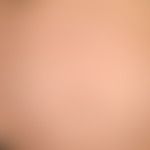Synonym(s)
HistoryThis section has been translated automatically.
Lawley, 1979; Holmes and Black 1983
DefinitionThis section has been translated automatically.
Non-recurrent, highly variegated, most common specific pregnancy dermatosis with highly pruritic, urticarial papules, plaques, and vesicles with self-limiting course. Symptoms typically appear in the last weeks of pregnancy, from the end of the 2nd trimester, or immediately postpartum (15%). Striking association with first-time mothers, multiple pregnancies, and excessive maternal weight gain.
You might also be interested in
Occurrence/EpidemiologyThis section has been translated automatically.
The frequency is estimated to be 1/60- to 1: 300 pregnancies. Thus, PUPPP is by far the most common pregnancy dermatosis (see below Pregnancy, skin lesions).
EtiopathogenesisThis section has been translated automatically.
Unknown. A connection with damage to collagen due to overstretching is suspected, whereby previously "inert structures" are supposed to acquire antigenic character and thereby trigger the exanthema (Ambros-Rudolph CM et al. 2017). This would explain that the disease starts in the striae distensae and manifests at the time of the highest abdominal distension. The role of peripheral microchimerism with deposition of fetal DNA in maternal skin is unclear.
ManifestationThis section has been translated automatically.
Mostly occurring in the last trimester; also immediate postpartum (15%). Association with first-time mothers, multiple pregnancies, excessive maternal weight gain (Murase JE et al 2014).
LocalizationThis section has been translated automatically.
Initially, the HVs are mainly found on the abdomen, leaving out the navel region; also on the back, buttocks, thighs and upper arms
ClinicThis section has been translated automatically.
Very diverse clinical picture. Beginning with a papular or urticarial, violently itchy exanthema (nodules, plaques) on the abdomen which spreads rapidly to the thighs, buttocks, arms and lateral parts of the trunk. Note: HV often start in the striae cutis distensae! In most cases (but not always) the umbilical region is left out! With increasing duration of the disease, there are not only urticarial papules, but also targetoid surface-smooth and eczema-like plaques; in addition, there are blisters (never blisters), also"prurigo-like" skin changes.
HistologyThis section has been translated automatically.
Perivascular lymphohistiocyte infiltration. Severe edema of the dermis. Less specific pattern! Only evaluable in connection with the clinic and immunohistology (negative findings)!
Direct ImmunofluorescenceThis section has been translated automatically.
Obligation negative.
Differential diagnosisThis section has been translated automatically.
External therapyThis section has been translated automatically.
Initially try with pale lotio alba, ethanolic zinc oxide shaking mixture R292, emulsions or gels free of active ingredients. Cooling gels free of active agents temporarily alleviate the itching R039.
Cool showers, "cool packs" or moist compresses, e.g. with 0.9% NaCL solution, also have a soothing effect.
If not sufficient, application of tannin 3-5% in lotio alba or of menthol(menthol cream 5%) - or polidocanol-containing topical preparations (e.g. R200, R197, Optiderm®).
Next step are glucocorticoid-containing emulsions (e.g. Hydrogalen, R123) or 0.5% hydrocortisone cream (see glucocorticoids pregnancy).
Internal therapyThis section has been translated automatically.
- In cases of severe and intolerable itching with considerable sleep disturbances glucocorticoids, e.g. prednisone (e.g. Decortin®) 50 mg/day p.o. are indicated for 3 days. Gradual dose reduction according to clinical findings (see glucocorticoids, pregnancy). Alternatively 25mg p.o for another 3 days (Ambros-Rudolph et al. 2017).
- In severe cases and in the last weeks of pregnancy additional administration of diphenhydramine HCl(e.g. Vivinox 25 to 50 mg/day) or benzodiazepines (e.g. diazepam 2-5 mg/day).
- The administration of antihistamines during pregnancy is assessed differently in the literature. At most, however, first-generation preparations such as clemastine (e.g. Tavegil 2 times/day 1 tbl. p.o. or 2 times/day 1 amp. i.v.) or hydroxyzine (e.g. Atarax 1-3 tbl./day) come into question (see also pemphigoid gestationis).
Progression/forecastThis section has been translated automatically.
Spontaneous healing of eruptions within 4-6 weeks. Healing is independent of the time of delivery. Rarer is a protracted course with persistence of the skin lesions for several months. Recurrences in one of the subsequent pregnancies are a rarity, as well as under contraceptives, No skin lesions are found in the newborns.
Note(s)This section has been translated automatically.
LiteratureThis section has been translated automatically.
- Ambros-Rudolph CM (2017) Specific pregnancy dermatoses. Dermatologist 68: 87-94
- Ambros-Rudolph CM (2010) Specific pregnancy dermatoses. Dermatologist 61: 1014-1020
- Cohen LM et al (1989) Pruritic urticarial papules and plaques of pregnancy and its relationship to maternal-fetal weigt gain and twin pregnancy. Arch Dermatol 125: 1534-1536
- Dietz H et al (1995) Pruriginous urticarial papules and plaques in pregnancy (PUPP). Z Hautkr 70: 429-431
- Elling SV et al (2000) Pruritic urticarial papules and plaques of pregnancy in twin and triplet pregnancies. J Eur Acad Dermatol Venereol 14: 378-381
- Kannambal K et al (2017) A Screening Study on Dermatoses in Pregnancy. J Clin Diagn Res 11:WC01-WC05.
- Murase JE et al (2014) Safety of dermatologic medications in pregnancy and lactation: Part I. Pregnancy. J Am Acad Dermatol 70:401.e1-14
- Nilles M et al (1989) The PUPPP dermatosis. Dermatologist 40: 586-588
- Ohlinger R et al (2003) Pruritic urticarial papules and plaques of pregnancy (PUPPP)--a case report. Z Obstetrics Neonatol 207: 107-109
Incoming links (10)
Papular dermatitis of pregnancy; Papules and plaques, pruritic urticarial in pregnancy; Pemphigoid gestationis; Polymorphic eruption of pregnancy; Polymorphic pregnancy dermatosis; Pregnancy dermatosis, atopic; Prurigo gestationis; Pruritic urticarial papules and plaques of pregnancy; Pupp; Spongiosis;Outgoing links (26)
Adverse drug reactions of the skin; Antihistamines, systemic; Atopic dermatitis (overview); Benzodiazepines; Carbomer gel hydrous (dab); Clemastine; Diphenhydramine; Erythema multiforme, minus-type; Glucocorticosteroids; Glucocorticosteroids pregnancy; ... Show allDisclaimer
Please ask your physician for a reliable diagnosis. This website is only meant as a reference.















